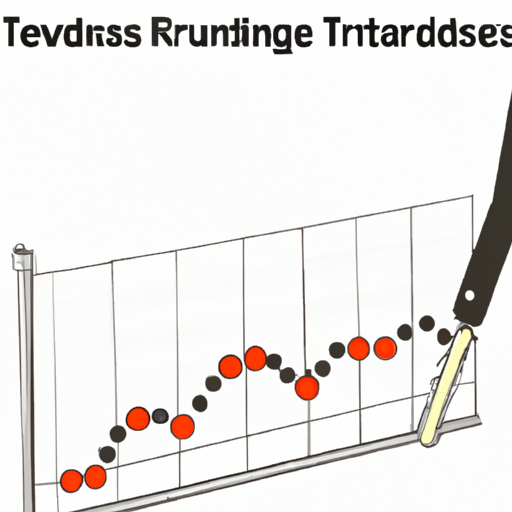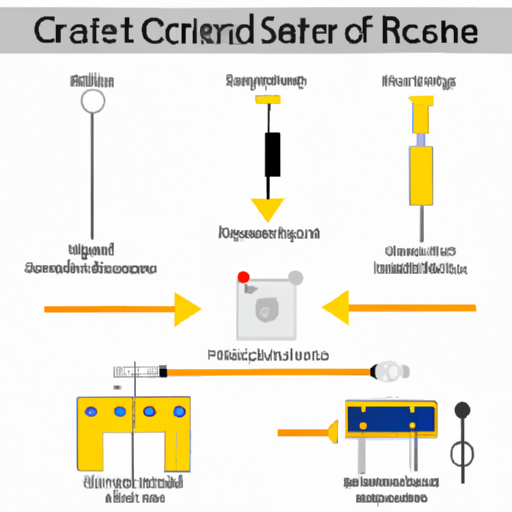What are the development trends in the resistor parameter industry?
System
Nov 09
2
Development Trends in the Resistor Parameter Industry
I. Introduction
Resistors are fundamental components in electronic circuits, serving the critical function of controlling current flow and voltage levels. They are essential for ensuring the proper operation of various electronic devices, from simple household appliances to complex industrial machinery. The resistor parameter industry encompasses the design, manufacturing, and application of resistors, which has evolved significantly over the years. This article aims to explore the current and future development trends in this dynamic industry, shedding light on the innovations and challenges that shape the landscape of resistor technology.
II. Historical Context
A. Evolution of Resistor Technology
The journey of resistor technology began with early designs, such as carbon composition and wire-wound resistors. These initial models were relatively simple and served their purpose adequately, but they had limitations in terms of precision and reliability. The introduction of film resistors, particularly metal film and thick film types, marked a significant advancement. These resistors offered improved performance characteristics, including better temperature stability and lower noise levels.
B. Key Milestones in Resistor Development
Throughout the decades, several key milestones have defined the evolution of resistors. The transition from carbon to film technologies in the mid-20th century allowed for greater precision and miniaturization. The advent of surface-mount technology (SMT) in the 1980s further revolutionized the industry, enabling manufacturers to produce smaller and more efficient resistors that could be easily integrated into compact electronic devices.
C. Impact of Technological Advancements on Resistor Parameters
Technological advancements have continually influenced resistor parameters, such as tolerance, temperature coefficient, and power rating. As electronic devices have become more sophisticated, the demand for resistors with tighter tolerances and better thermal performance has increased. This trend has driven innovation in materials and manufacturing processes, leading to the development of high-precision resistors that meet the stringent requirements of modern applications.
III. Current Trends in the Resistor Parameter Industry
A. Miniaturization of Resistors
One of the most significant trends in the resistor parameter industry is the miniaturization of components. As electronic devices become smaller and more compact, there is a growing demand for smaller resistors that can fit into tight spaces without compromising performance. Advances in manufacturing techniques, such as thin-film deposition and laser trimming, have enabled the production of miniature resistors that maintain high precision and reliability.
B. Increased Precision and Accuracy
In today's electronic landscape, precision and accuracy are paramount. The importance of tolerance and temperature coefficient cannot be overstated, as even minor deviations can lead to significant performance issues in sensitive applications. The development of high-precision resistors, often with tolerances as low as 0.01%, has become a focal point for manufacturers. These resistors are essential in applications such as medical devices, aerospace, and telecommunications, where reliability is critical.
C. Enhanced Power Handling Capabilities
With the rise of high-power applications, there is an increasing need for resistors that can handle greater power levels without overheating or failing. Innovations in materials and designs have led to the development of resistors with enhanced power handling capabilities. For instance, ceramic and metal oxide materials are being utilized to create resistors that can withstand higher temperatures and dissipate heat more effectively, making them suitable for demanding applications in electric vehicles and renewable energy systems.
D. Integration with Smart Technologies
The proliferation of the Internet of Things (IoT) and smart devices has opened new avenues for resistor technology. The development of smart resistors, which incorporate integrated sensors and communication capabilities, is gaining traction. These resistors can monitor their own performance and provide real-time data to optimize circuit operation. As smart technologies continue to evolve, the integration of resistors with advanced functionalities will become increasingly important.
IV. Emerging Technologies and Materials
A. Use of Advanced Materials
The exploration of advanced materials is a key trend in the resistor parameter industry. Conductive polymers and nanomaterials are being investigated for their potential to enhance performance and reliability. These materials can offer improved conductivity, lower weight, and greater flexibility, making them attractive options for next-generation resistors.
B. Development of Thin-Film and Thick-Film Technologies
Thin-film and thick-film technologies are at the forefront of resistor development. Thin-film resistors, known for their high precision and stability, are ideal for applications requiring tight tolerances. In contrast, thick-film resistors offer greater power handling capabilities and are often used in high-current applications. The choice between these technologies depends on the specific requirements of the application, and ongoing research is focused on optimizing their performance characteristics.
C. 3D Printing and Additive Manufacturing
The advent of 3D printing and additive manufacturing is revolutionizing the way resistors are designed and produced. This technology allows for rapid prototyping and customization, enabling manufacturers to create unique resistor designs tailored to specific applications. The potential for new resistor geometries and configurations opens up exciting possibilities for innovation in the industry.
V. Market Dynamics and Consumer Demands
A. Growing Demand in Various Sectors
The resistor parameter industry is experiencing growing demand across various sectors, including automotive, telecommunications, and consumer electronics. The rise of electric vehicles and renewable energy technologies is particularly influential, as these applications require advanced resistor solutions to manage power efficiently and ensure reliable operation.
B. Sustainability and Environmental Considerations
Sustainability is becoming a critical consideration in the resistor parameter industry. There is a noticeable shift towards eco-friendly materials and processes, driven by regulatory pressures and consumer demand for environmentally responsible products. Manufacturers are exploring ways to reduce waste, minimize energy consumption, and utilize recyclable materials in resistor production.
C. Global Supply Chain Challenges
The global supply chain landscape is evolving, with geopolitical factors impacting material availability and production capabilities. The COVID-19 pandemic highlighted vulnerabilities in supply chains, prompting manufacturers to adopt strategies for resilience. Diversifying suppliers, investing in local production, and enhancing inventory management are some of the approaches being implemented to navigate these challenges.
VI. Future Outlook
A. Predictions for the Next Decade
Looking ahead, the next decade promises to bring significant technological advancements in the resistor parameter industry. Innovations in materials, manufacturing processes, and smart technologies will continue to shape the market. The demand for high-precision, high-power, and miniaturized resistors will drive research and development efforts, leading to new applications and market opportunities.
B. Role of Research and Development
Research and development will play a crucial role in maintaining competitiveness in the resistor parameter industry. Collaboration between academia and industry will be essential for fostering innovation and addressing emerging challenges. Investment in R&D will enable manufacturers to stay ahead of the curve and meet the evolving needs of their customers.
C. Challenges and Opportunities
While the future holds great promise, the resistor parameter industry will face challenges in balancing performance, cost, and sustainability. Navigating regulatory landscapes and adapting to changing consumer preferences will require agility and foresight. However, these challenges also present opportunities for innovation and growth, as manufacturers seek to develop solutions that align with market demands.
VII. Conclusion
In summary, the resistor parameter industry is undergoing significant transformations driven by technological advancements, market dynamics, and consumer demands. The trends of miniaturization, increased precision, enhanced power handling, and integration with smart technologies are shaping the future of resistors in electronic applications. Staying informed about these developments is crucial for industry stakeholders, as the landscape continues to evolve. As we look to the future, the importance of resistors in electronic applications will only grow, underscoring the need for ongoing innovation and adaptation in this vital industry.
VIII. References
A comprehensive list of studies, articles, and industry reports will be provided to support the insights shared in this article. For those interested in delving deeper into resistor technologies and trends, suggested further reading will be included to enhance understanding and knowledge in this field.
Read more





